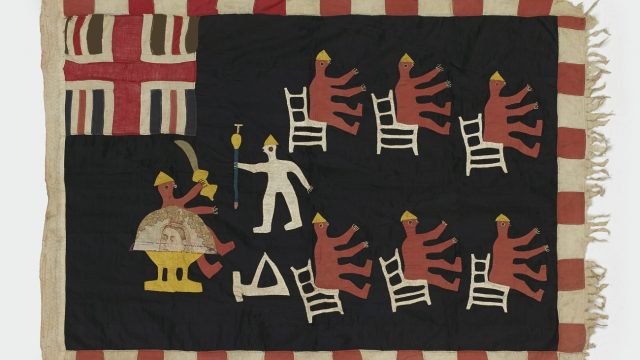Our team are currently developing plans for the new V&A East Museum, a five-storey museum designed by O’Donnell + Tuomey in the Queen Elizabeth Olympic Park. An important part of the development of a new gallery or display is viewing potential objects from across the V&A’s collections. This helps us to progress plans for the new museum’s two free collection galleries which will explore and celebrate global making across time.
After an initial period of scoping objects digitally via CMS (our Collections Management System) and researching objects, we arrange viewings with colleagues in collection departments within whose remit the object sits. After several years of collection scoping and research to inform the curatorial development of V&A East Museum, we are now in the last stretch of object viewings. This means that our current viewings include seeing objects that we haven’t managed to see yet and they are often an eclectic mix from across the collections and stores. On one very busy Monday in February, we viewed dozens of objects ranging from photographs to fashion to set models across three of the museum’s stores in South Kensington. This blog will give you an insight into our day and ongoing object selection process.
The first store we visited, G38, is the main store used by the V&A East team and a former photography gallery repurposed into an object store. The store is shared with the Young V&A team, so it houses an amazing variety of objects.
V&A East Store
Affectionately called the ‘cane dress’ by museum staff, this dress was designed by Welsh designer Dai Rees (b. 1961) in 1999. It reflects Rees’ appreciation for regional heritage and rural craftsmanship which he tried to capture and preserve in his work, and champion in a fashion context. The dress featured in the V&A’s 1999 Fashion in Motion, a live fashion event that continues to this day, and was a staple of our Textiles and Fashion department’s Clothworkers’ Centre tours for many years afterwards.
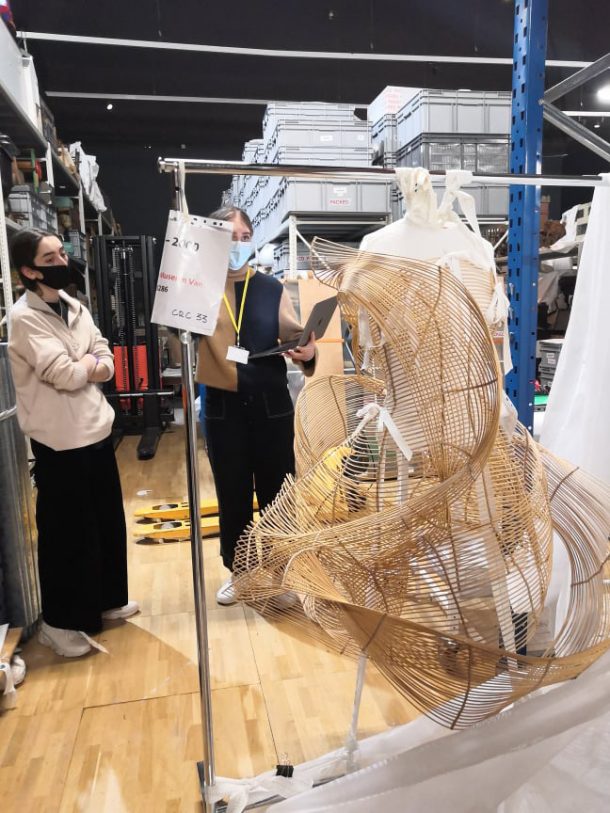
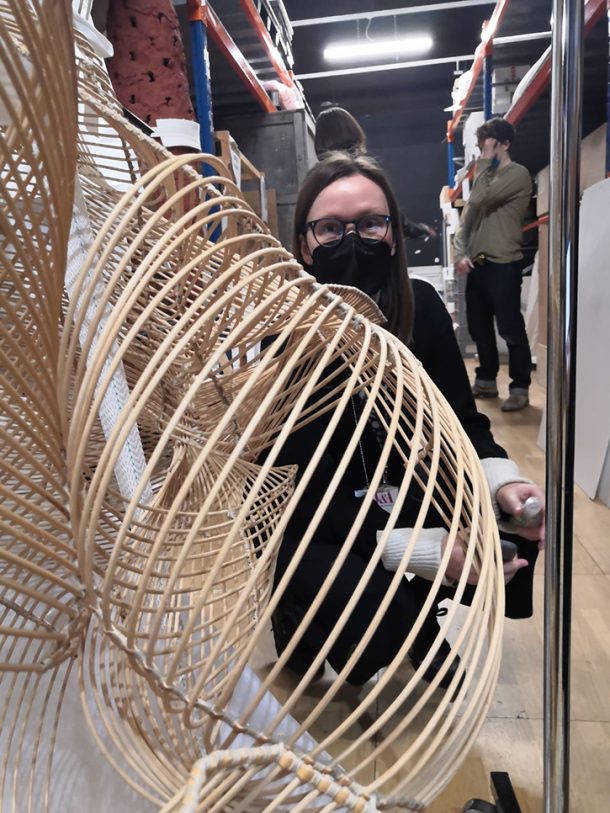
During the viewing we were struck by the beautiful, intricate details of the craftsmanship as well as the bold structural form. Viewing sessions like this offer important curatorial inspiration for the object’s display and our reflections will inform future conversations with our Conservation, Technical Services and gallery design teams about the presentation of this object at V&A East Museum.
Being able to see the dress up close allowed us to understand more of how this dress was made: the main strips of cane were fixed between narrower strips and bound by thread. Some glue on the binding further helped to keep this dress in perfect shape. These construction details will inform ongoing research into the object and its place within the history of craft.
North Court Store
The second store we visited was a transit store called the North Court Store which temporarily holds objects for exhibitions, loans and object decants before they are moved to their next location. There we viewed a photograph by South Korean photographer Bae Bien-U (b. 1950) who is known for his atmospheric, large black and white photographs of the Korean landscape. This 2014 photograph gives an interesting insight into how Bae explores and expresses his Korean identity. Not only does the photograph show the Korean landscape, but Bae believes that pine trees embody similar characteristics to Korean people, including ‘eagerness, perseverance through years of conflict, and spirituality’.
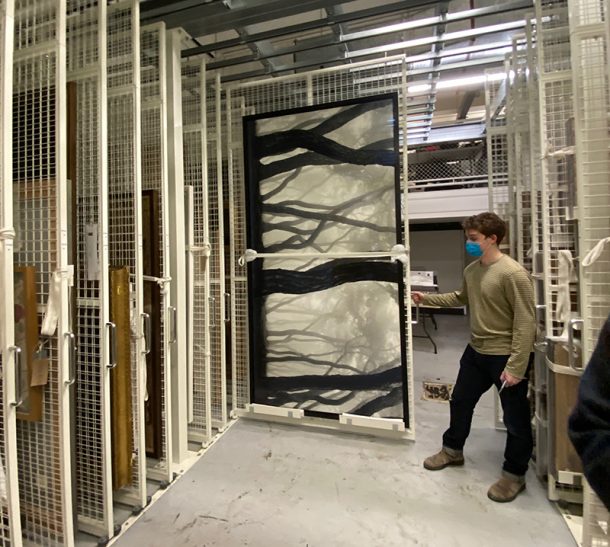
Even though we knew the measurements of the photograph, it was difficult to fully understand the size and the impact of the work until we viewed it in person. Even rotated on its side for more efficient storage, the photograph is wonderful and immersive, and helped us to understand the artist’s intentions.
Ceramics Study Room
The last viewing of the day took place in the ceramics study room and our colleagues from the Art, Architecture, Photography and Design department – Donata Miller, Assistant Curator of Africa and African Diaspora, and Livia Turnbull, Assistant Curator of Design and Digital – kindly brought objects made by the Granby Workshop. The Workshop was set up by the multidisciplinary collective Assemble and the Granby 4 Streets Community Land Trust. It was part of the community-led initiative to regenerate the Granby neighbourhood in Liverpool, a project for which Assemble won the Turner Prize in 2015. The V&A collected a range of Granby Workshop products at the time, including textiles, tiles, lamps and ceramic handles
The session was an important opportunity to review our holdings of the Granby Workshop textiles which are currently in storage. By viewing these we were able to get a sense of the size and display options of each of the pieces as well as colour combinations we might want to pursue. As textiles may discolour if exposed to light for too long, the museum follows a rule that textiles can only be on display for two out of every ten years. Therefore, we are looking to develop several options so that the textiles can be rotated after two years.
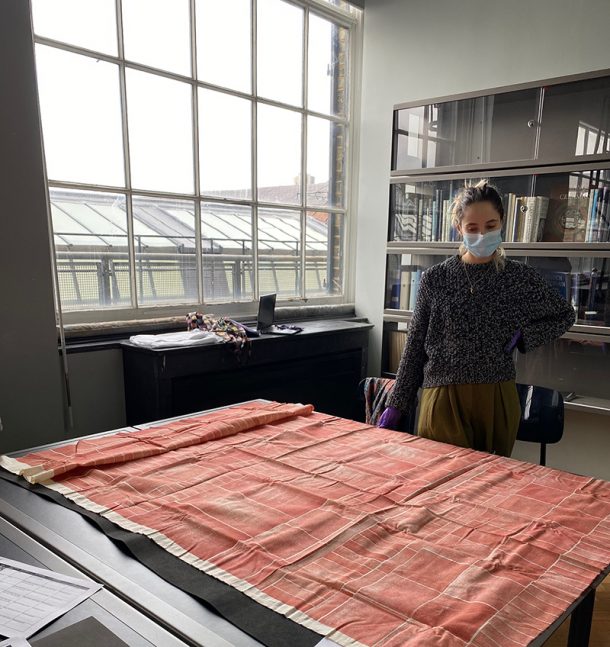
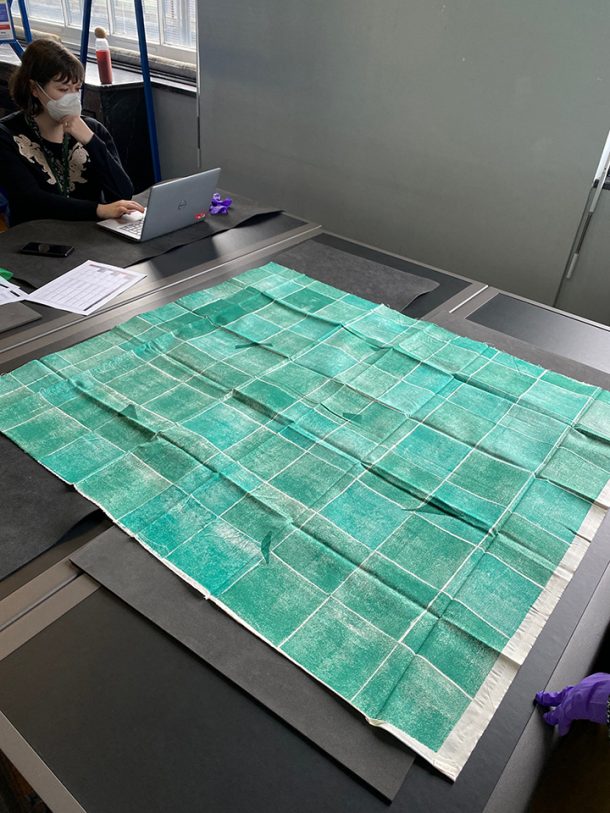
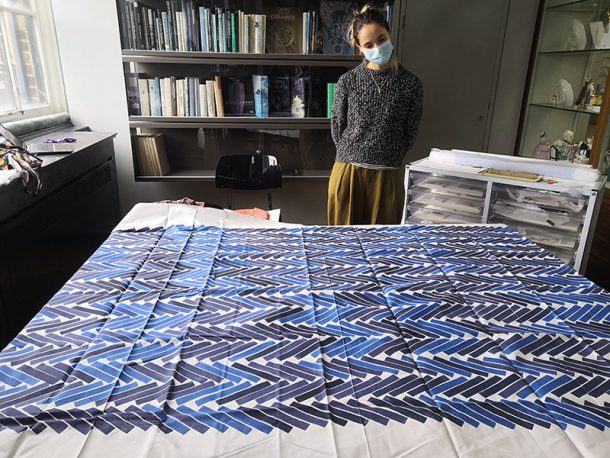
It was fantastic to see the textiles laid out and appreciate the character of each of the patterns up-close. Each Granby Workshop piece is entirely unique. The repetitive motif is produced through wood block printing, with timber off cuts that are inked and laid out by hand on the textile. The subtle structure of each wood block piece is imprinted on the fabric.
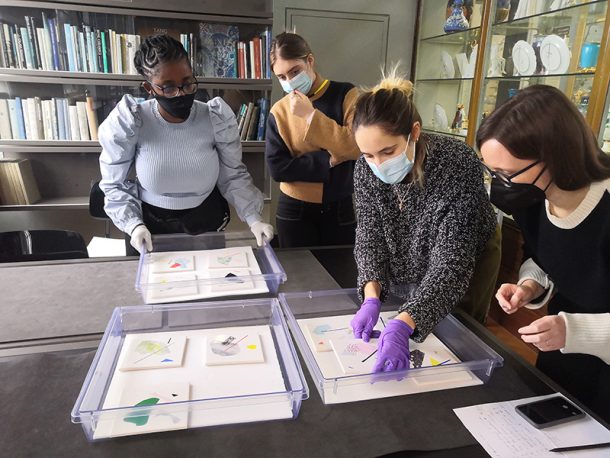
Donata and Livia showing Freya and Zofia Granby Workshop ‘Cut Out Tiles’, which were decorated with hand-made collages of decal paper (a patterned paper that transfers its colour and print to a tile). A key benefit of a viewing session is that you can try different object combinations on the spot and see how the objects look together. We tried different groupings of tiles on the day and have some favourites but will make the final decision during a workshop when we can consider the tiles in relation to the wider group of objects we are planning to display.
Viewing days are often intense but they are invaluable in helping us choose the most impactful objects that you will hopefully enjoy seeing once our doors have opened!


